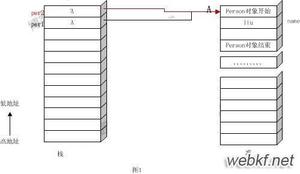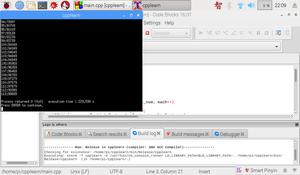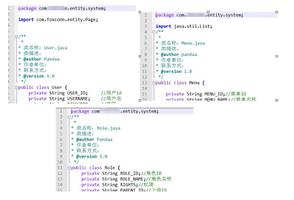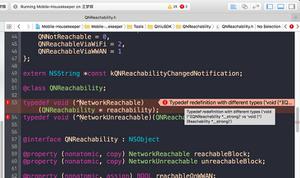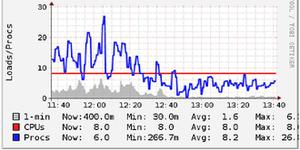Java中泛型中的通配符参数是什么?
泛型是Java中的一个概念,您可以在其中启用类,接口和方法,以接受所有(引用)类型作为参数。换句话说,该概念使用户能够动态选择方法(类的构造函数)接受的引用类型。通过将类定义为泛型,可以使其成为类型安全的,即它可以作用于任何数据类型。
要定义泛型类,您需要在类名称后的尖括号“ <>”中指定要使用的类型参数,并将其视为实例变量的数据类型,然后继续执行代码。
示例
class Student<T>{ T age;
Student(T age){
this.age = age;
}
public void display() {
System.out.println("Value: "+this.age);
}
}
public class GenericsExample {
public static void main(String args[]) {
Student<Float> std1 = new Student<Float>(25.5f);
std1.display();
Student<String> std2 = new Student<String>("25");
std2.display();
Student<Integer> std3 = new Student<Integer>(25);
std3.display();
}
}
输出结果
Value: 25.5Value: 25
Value: 25
通配符
除了泛型(T)中的类型化参数外,您还可以使用“?”表示未知类型。您可以将通配符用作-
参数类型。
字段
本地字段。
对通配符的唯一限制是,您不能在调用它时将其作为泛型方法的类型参数。
Java提供3种类型的通配符,即上限,下限,无界。
上限通配符
通配符中的上限与泛型中的有界类型相似。使用此功能,可以将特定类的所有子类型用作类型参数。
例如,如果要接受Collection对象作为方法的参数,而类型化的参数作为数字类的子类,则只需要声明一个以数字类为上限的通配符即可。
要创建/声明上限通配符,只需在“?”之后指定extends关键字即可。然后是类名。
示例
以下Java示例演示了上限通配符的创建。
import java.util.ArrayList;import java.util.Arrays;
import java.util.Collection;
import java.util.List;
import java.util.HashSet;
public class UpperBoundExample {
public static void sampleMethod(Collection<? extends Number> col){
for (Number num: col) {
System.out.print(num+" ");
}
System.out.println("");
}
public static void main(String args[]) {
ArrayList<Integer> col1 = new ArrayList<Integer>();
col1.add(24);
col1.add(56);
col1.add(89);
col1.add(75);
col1.add(36);
sampleMethod(col1);
List<Float> col2 = Arrays.asList(22.1f, 3.32f, 51.4f, 82.7f, 95.4f, 625.f);
sampleMethod(col2);
HashSet<Double> col3 = new HashSet<Double>();
col3.add(25.225d);
col3.add(554.32d);
col3.add(2254.22d);
col3.add(445.21d);
sampleMethod(col3);
}
}
输出结果
24 56 89 75 3622.1 3.32 51.4 82.7 95.4 625.0
25.225 554.32 2254.22 445.21
如果您将不是Number子类的type以外的其他收集对象作为参数传递给上述程序的sampleMethod(),则将生成编译时错误。
示例
import java.util.ArrayList;import java.util.Arrays;
import java.util.Collection;
import java.util.List;
import java.util.HashSet;
public class UpperBoundExample {
public static void sampleMethod(Collection<? extends Number> col){
for (Number num: col) {
System.out.print(num+" ");
}
System.out.println("");
}
public static void main(String args[]) {
ArrayList<Integer> col1 = new ArrayList<Integer>();
col1.add(24);
col1.add(56);
col1.add(89);
col1.add(75);
col1.add(36);
sampleMethod(col1);
List<Float> col2 = Arrays.asList(22.1f, 3.32f, 51.4f, 82.7f, 95.4f, 625.f);
sampleMethod(col2);
HashSet<String> col3 = new HashSet<String>();
col3.add("Raju");
col3.add("Ramu");
col3.add("Raghu");
col3.add("Radha");
sampleMethod(col3);
}
}
编译时错误
UpperBoundExample.java:31: error: incompatible types: HashSet<String> cannot be converted to Collection<? extends Number>sampleMethod(col3);
^
Note: Some messages have been simplified; recompile with -Xdiags:verbose to get full output
1 error
下界通配符
上限通配符允许使用特定类的所有子类型作为类型化参数。
同样,如果我们使用下界通配符,则可以限制“?”的类型 到特定类型或超类型。
例如,如果要接受Collection对象作为方法的参数,而类型化的参数作为Integer类的超类,则只需要声明一个带有Integer类的下限通配符。
要创建/声明下界通配符,只需在“?”之后指定super关键字。然后是类名。
以下Java示例演示了下界通配符的创建。
示例
import java.util.ArrayList;import java.util.Arrays;
import java.util.Collection;
import java.util.List;
import java.util.Iterator;
public class LowerBoundExample {
public static void sampleMethod(Collection<? super Integer> col){
Iterator it = col.iterator();
while (it.hasNext()) {
System.out.print(it.next()+" ");
}
System.out.println("");
}
public static void main(String args[]) {
ArrayList<Integer> col1 = new ArrayList<Integer>();
col1.add(24);
col1.add(56);
col1.add(89);
col1.add(75);
col1.add(36);
sampleMethod(col1);
List<Object> col2 = Arrays.asList(22.1f, 3.32f, 51.4f, 82.7f, 95.4f, 625.f);
sampleMethod(col2);
}
}
输出结果
24 56 89 75 3622.1 3.32 51.4 82.7 95.4 625.0
如果您将除Integer以外的其他类型的收集对象及其超类型作为参数传递给上述程序的sampleMethod(),则会生成编译时错误。
示例
import java.util.ArrayList;import java.util.Arrays;
import java.util.Collection;
import java.util.List;
import java.util.Iterator;
import java.util.HashSet;
public class LowerBoundExample {
public static void sampleMethod(Collection<? super Integer> col){
Iterator it = col.iterator();
while (it.hasNext()) {
System.out.print(it.next()+" ");
}
System.out.println("");
}
public static void main(String args[]) {
ArrayList<Integer> col1 = new ArrayList<Integer>();
col1.add(24);
col1.add(56);
col1.add(89);
col1.add(75);
col1.add(36);
sampleMethod(col1);
List<Object> col2 = Arrays.asList(22.1f, 3.32f, 51.4f, 82.7f, 95.4f, 625.f);
sampleMethod(col2);
HashSet<Double> col3 = new HashSet<Double>();
col3.add(25.225d);
col3.add(554.32d);
col3.add(2254.22d);
col3.add(445.21d);
sampleMethod(col3);
}
}
编译时错误
LowerBoundExample.java:34: error: incompatible types: HashSet<Double> cannot be converted to Collection<? super Integer>sampleMethod(col3);
^
Note: Some messages have been simplified; recompile with -Xdiags:verbose to get full output
1 error
无限通配符
无界通配符是一种允许使用未知类型的所有子类型的通配符,即,任何类型(对象)都可以用作类型参数。
例如,如果要接受对象类型的ArrayList作为参数,则只需要声明一个无界通配符即可。
要创建/声明无界通配符,您只需要指定通配符“?” 作为尖括号内的类型化参数。
示例
以下Java示例演示了无界通配符的创建。
import java.util.List;import java.util.Arrays;
public class UnboundedExample {
public static void sampleMethod(List<?> col){
for (Object ele : col) {
System.out.print(ele+" ");
}
System.out.println("");
}
public static void main(String args[]) {
ArrayList<Integer> col1 = new ArrayList<Integer>();
col1.add(24);
col1.add(56);
col1.add(89);
col1.add(75);
col1.add(36);
sampleMethod(col1);
ArrayList<Double> col2 = new ArrayList<Double>();
col2.add(24.12d);
col2.add(56.25d);
col2.add(89.36d);
col2.add(75.98d);
col2.add(36.47d);
sampleMethod(col2);
}
}
输出结果
24 56 89 75 3624.12 56.25 89.36 75.98 36.47
如果传递通过数组创建的List对象(包含基本类型的元素),则会生成编译时错误。
import java.util.ArrayList;import java.util.Arrays;
import java.util.List;
public class UnboundedExample {
public static void sampleMethod(List<?> col){
for (Object ele : col) {
System.out.print(ele+" ");
}
System.out.println("");
}
public static void main(String args[]) {
ArrayList<Integer> col1 = new ArrayList<Integer>();
col1.add(24);
col1.add(56);
col1.add(89);
col1.add(75);
col1.add(36);
sampleMethod(col1);
ArrayList<Double> col2 = new ArrayList<Double>();
col2.add(24.12d);
col2.add(56.25d);
col2.add(89.36d);
col2.add(75.98d);
col2.add(36.47d);
sampleMethod(col2);
List<Object> col2 = Arrays.asList(22.1f, 3.32f, 51.4f, 82.7f, 95.4f, 625.f);
sampleMethod(col2);
}
}
编译时错误
UnboundedExample.java:27: error: variable col2 is already defined in method main(String[])List<Object> col2 = Arrays.asList(22.1f, 3.32f, 51.4f, 82.7f, 95.4f, 625.f);
^
1 error
以上是 Java中泛型中的通配符参数是什么? 的全部内容, 来源链接: utcz.com/z/326347.html


